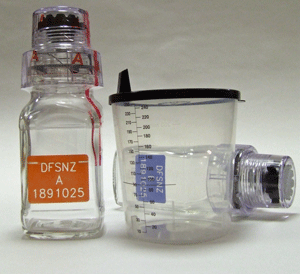Retesting stored samples: From the IOC to NZ
A powerful result for clean sport

London 2012 reanalysis: A powerful result for clean sport
73 sanctions have been uncovered and 46 Olympic medals reallocated as part of the International Testing Agency’s (ITA) London 2012 Olympic Games sample re-analysis programme. It’s a powerful result for clean sport and for the clean athletes who lost out to dopers on the Olympic stage.
Sample reanalysis involves taking old samples from long-term storage and testing them again using modern methods and information. It isn’t a new practice: the IOC has been reanalysing samples since the 2004 Athens Olympic Games. Under current regulations, samples can be stored – and sanctions persued – for up to 10 years after the sample was first analysed. It’s an important and effective detection and deterrance method. Many of the 73 sanctions uncovered in 2012 samples relate to anabolic steroids, and were only discovered thanks to a new detection method known as the ‘long-term metabolite (LTM) test’.
Bulk re-analysis in Aotearoa New Zealand
Reanalysing stored samples is another way for anti-doping organisations to protect clean athletes, the integrity of sport and the spirit of fair play. It means that athletes who dope and aren’t caught at the time have no assurance that they’ve gotten away with it.
Sample storage and reanalysis is commonplace among national anti-doping organisations and something we’ve done here at Drug Free Sport New Zealand since 2010. We “tank” (send to the lab for storage) approximately 100 urine samples per year, which works out at around 7% of the total samples collected. We reanalyse them on a case-by-case basis, usually starting with the oldest samples available (before the 10-year time limit expires) and guided by intel and sport doping risk.
During COVID, we began the first bulk reanalysis of tanked samples in our organisation’s history. COVID lockdowns had restricted our access to, and ability to test, athletes. With only a fraction of our usual testing taking place, it was a good opportunity to do the work. Around 100 samples were selected based on a number of factors (such as the doping risk of certain sports) and our Sydney laboratory began reanalysing. We weren’t sure what we might uncover, however our bulk reanalysis revealed no hidden doping. More evidence reinforcing NZ's reputation for clean athletes who compete with integrity.
Preparing for retrospective positives with TUEs
One interesting case gave us pause. Upon reanalysis, one of the samples flagged a positive result for a banned substance. We investigated. It turned out that the athlete in question had a very good reason for the substance to be present in their system and – most importantly of all – had an approved TUE in place to confirm it. No rules were broken, and everything was in order. It highlighted the importance of having a TUE in place whenever needed – without it, the athlete would have been looking at a potential sanction.
With our ability to detect substances and pursue cases years after the sample has been collected, getting TUEs in place and saving medical evidence have never been more important.
